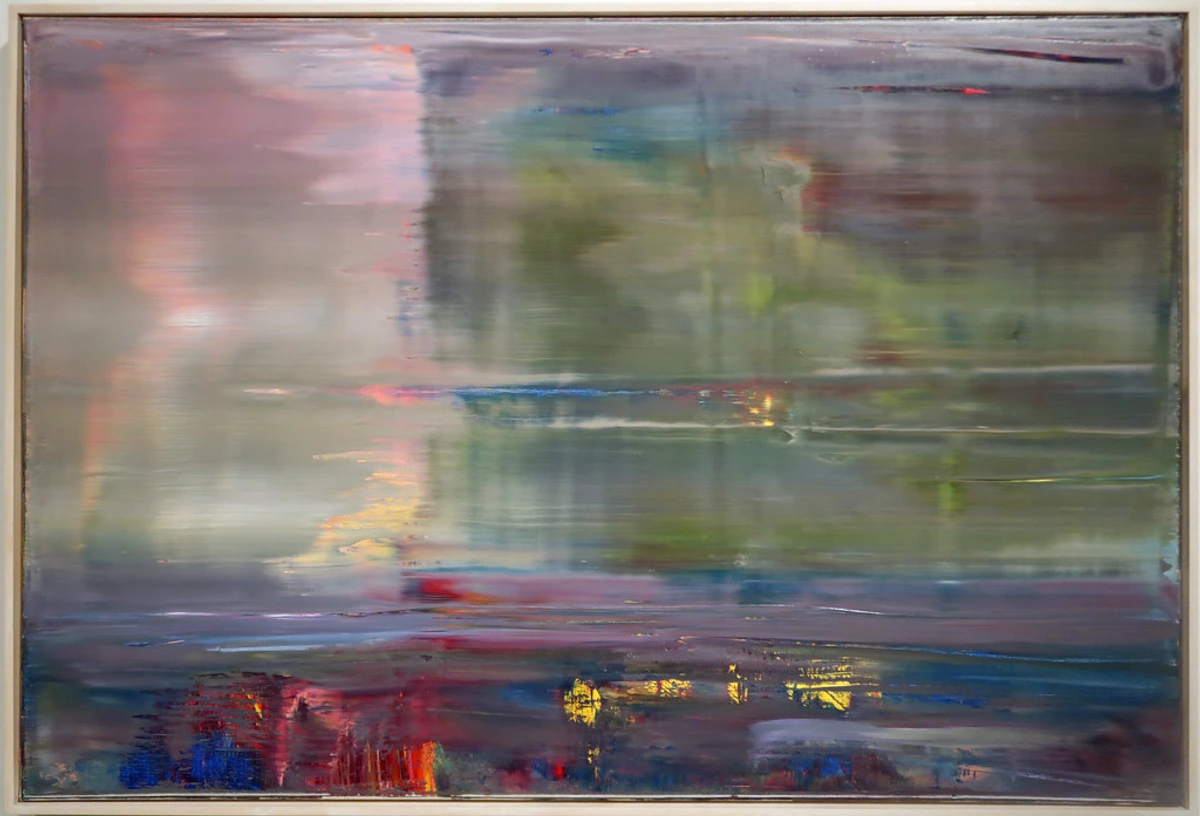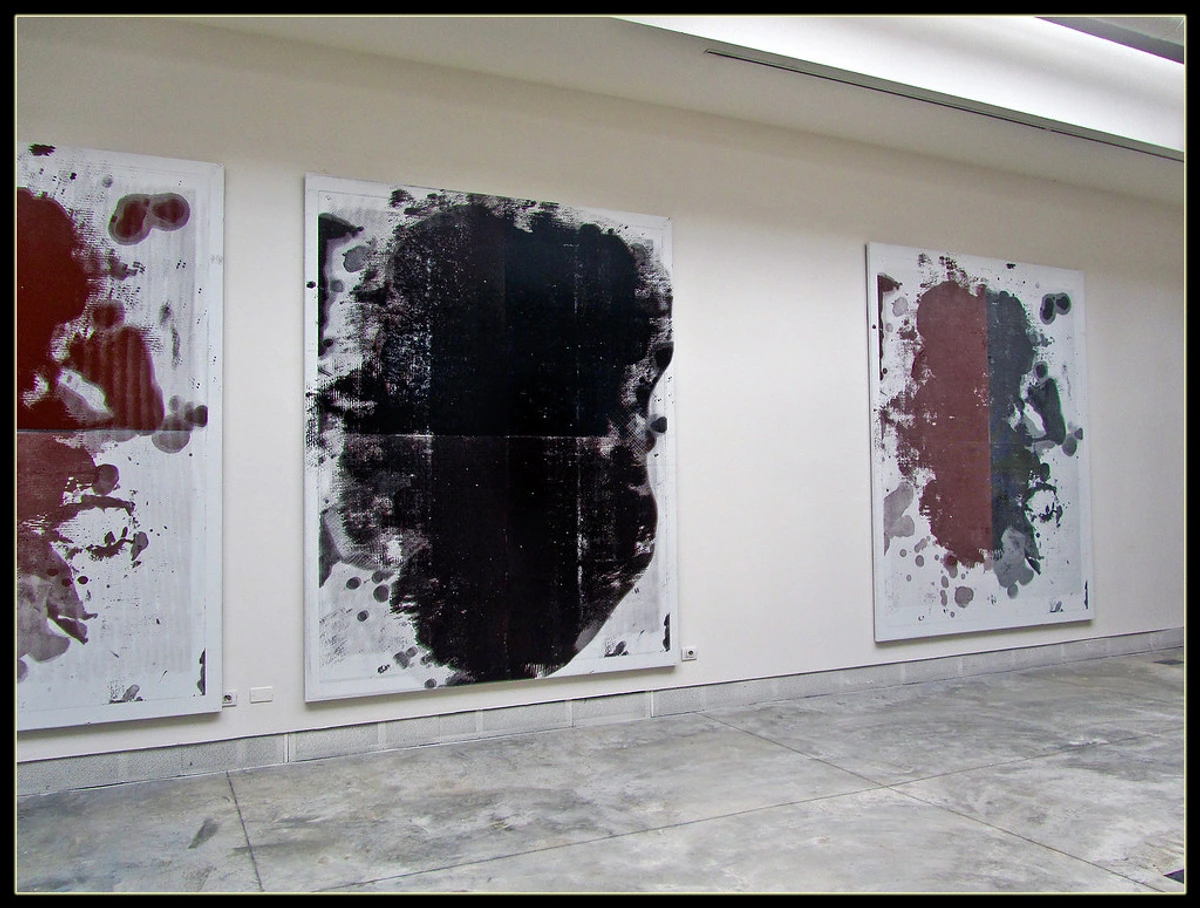Artist's Guide: Preserving Abstract Art for Generations
An artist's deeply personal guide to preserving abstract art for generations. Explore vital tips on materials, fighting unseen enemies like light and humidity, responsible display, proper storage, understanding mixed media, and knowing when to call art conservation experts. My musings on art's enduring legacy and the artist's role in its longevity.
My Personal Guide to Preserving Abstract Art (Because Time Flies, But Art Shouldn't Fade)Watching my paintings come to life, I've always felt a deep, almost ironic, tension: the ephemeral nature of creation versus the fervent desire for art to endure. As an artist, I pour my heart and soul into each piece, hoping it sparks joy and contemplation for years, decades, perhaps even centuries. But then, a slightly neurotic thought intrudes: "What about the relentless sun? And that suspiciously persistent, tiny leak in the studio roof?" It’s a deeply human urge, isn't it? We want the things we love to last.
That's why I recently dove headfirst into the world of art conservation. Not from a sterile lab, mind you, but from the comfortable chaos of my own studio. I wanted to understand, truly, how to safeguard abstract art – whether it's one of my own creations, a piece I’ve carefully chosen for my home, or perhaps even a future acquisition from my site where you can always find art for sale. Think of this as my slightly-less-than-scientific but very heartfelt Q&A with the collective wisdom of conservators, filtered through my artist's brain, covering everything from the foundational choice of materials to responsible display, careful storage, knowing when to entrust your treasures to the experts, and the sometimes-tricky world of documenting your collection.
The Artist's First Line of Defense: Materials and Their Eternal Promise
This topic is incredibly close to my heart, a constant whisper in my creative process. As an artist, I obsess over the materials I use. It's a fundamental decision that dictates the very lifespan of a piece. I want my abstract acrylics to maintain their vibrancy, my mixed media creations to stay cohesive, my pigments to defy the slow march of fading. Modern pigments, thankfully, are generally far more lightfast than their historical counterparts, yet quality still varies wildly. This is why I always opt for professional-grade, archival materials.
I learned early on that cutting corners on materials is a false economy; that vibrant cadmium red might shift towards orange over time when exposed to UV light if it's not archival, or a cheap canvas might literally fall apart at the seams. If I'm pouring my soul into it, I want it to stick around, a silent testament to a moment in time, beautifully preserved for generations to experience. It’s an artist’s silent pact with the future, a hope that the choices made today resonate across decades.

https://live.staticflickr.com/65535/51907566658_1100dbeb2a_b.jpg, https://creativecommons.org/licenses/by-nc-sa/2.0/
The Unseen Enemies: What's Really Attacking Your Abstract Art?
It’s rarely a dramatic heist scene; more often, it's the slow, insidious creep of everyday life that threatens your cherished art. I've learned that the biggest culprits are usually the elements we take for granted, subtly eroding beauty. It’s like a quiet war where your art is the unsuspecting battlefield.
- Light: Oh, light, my constant muse and, at times, my silent nemesis! While absolutely essential for viewing art, prolonged exposure, especially to direct sunlight or harsh UV radiation, is a major fade-dealer. It's not just the obvious UV, but also visible light and even infrared (heat) that contribute to degradation. Pigments shift, paper yellows and becomes brittle, canvas can weaken. I once had a small, intensely colored abstract on paper near a south-facing window (a moment of pure aesthetic indulgence over common sense, I admit), and after a year, the vibrant blues had mellowed into a sort of melancholic grey. It was a harsh, visible lesson. For deeper insights, you might find my article on protecting art from sunlight helpful.
- Humidity & Temperature: Imagine your abstract art sweating or shivering. Not good, right? Fluctuations cause materials to expand and contract at different rates, leading to stress, cracks, warping, and even mold growth. My studio, like many homes, can get a bit humid; I often think of my paintings gasping for air, silently begging for stability. Think of microclimates in your home – that drafty corner, the wall above a radiator, or the area near a humidifier. Each creates unique challenges.
- Pollutants: Dust, smoke (even from candles!), cooking fumes, even the off-gassing from new furniture, paint, or cleaning products – they're the invisible grime that settles, slowly dulls surfaces, and can chemically react with delicate pigments and binders. Off-gassing is the release of airborne chemicals, and these invisible fumes are a silent, potent threat. I once had a piece (a momentary lapse of judgment) near the kitchen, and let's just say it developed a 'patina' I definitely didn't intend – a hazy, sticky film I couldn't simply wipe away without risking damage. Never again.
- Poor Handling & Storage: This is where my clumsy inner self shudders. Improper framing, leaning art against walls without protection, stacking pieces without interleaving (using a protective sheet between artworks), or even just picking up a canvas incorrectly can lead to tears, dents, surface abrasions, and structural damage. It's a quick path to irreversible sorrow, and I’ve had my share of near-misses (like almost dropping a wet painting, pure terror!).

https://live.staticflickr.com/6195/6087778411_164f0d9a2f_b.jpg, https://creativecommons.org/licenses/by-nc-nd/2.0/
Displaying Art Responsibly: Beyond Just Aesthetics
We all want our art to look fabulous, right? But what if looking fabulous today means looking faded or damaged tomorrow? It's a trade-off I constantly ponder, a delicate balance between presentation and preservation. Here's what I've gathered to help you make informed choices, filtered through my own trial and error (mostly error).
Where to Hang (or Not to Hang)
Avoid direct sunlight at all costs. Seriously. South-facing windows are beautiful for plants, less so for your vibrant abstract masterpiece. Consider UV-filtering glass or acrylic for framed pieces, especially for works on paper or photographs. It's an investment, yes, but often far less than the cost of professional restoration.
- UV-Filtering Glass: Offers superior protection against UV rays and can come with anti-reflective coatings. It's heavier and more prone to breakage than acrylic, but less prone to scratching. Great for those precious drawings or photographs.
- UV-Filtering Acrylic (Plexiglas): Lighter, shatter-resistant, and can also offer excellent UV protection. However, it scratches more easily than glass and can generate static, which might attract dust to the artwork if not properly sealed. For larger works, its lighter weight can be a significant advantage.
For more tips on making your art shine safely, you might check out my article on how to light and position abstract art for maximum impact.
Framing: Not Just a Pretty Border
Framing isn't just about aesthetics; it's a crucial layer of protection, a tiny, stylish fortress for your art. Think of it as its personal bodyguard, but one that also looks fantastic.
- For Works on Paper: Always use archival, acid-free mats and backing boards. These materials prevent chemical reactions that can cause discoloration and degradation over time. The mat also creates a crucial air gap between the artwork and the glass, preventing the artwork from sticking or creating damaging microclimates. The backing board is equally vital; it’s the last line of defense against environmental pollutants and acidity from the wall itself.
- For Canvases: Ensure the frame offers sufficient support without pressing against the canvas. The stretcher bars should be sturdy and allow for slight movement if the canvas needs restretching (though ideally, it won't if properly stored).
- Frame Materials: Be mindful of the frame itself. Certain unsealed woods can off-gas acids that can harm your artwork over time. Opt for metal frames, archival-quality wood, or ensure wooden frames are properly sealed on the inside. I’ve heard horror stories of beautiful antique frames actually damaging the very art they were meant to protect.

https://live.staticflickr.com/65535/53064827119_1b7c27cd96_b.jpg, https://creativecommons.org/licenses/by-nc-nd/2.0/
Storage: Sending Your Art on a Well-Deserved, Safe Vacation
Let's be honest, sometimes we don't have enough wall space, or we're moving, or we're just rotating our collection. Whatever the reason, proper storage is vital for the long-term health of your art. I think of it as sending my art on a well-deserved, safe vacation, away from the stresses of daily life, where it can recharge without fear of dust bunnies or rogue sunbeams.
- Environment: Cool, dark, dry, and stable. Sounds like a meticulously prepared cave, but ideally, it's a climate-controlled room. Avoid basements (hello, humidity, and potential flooding!) and attics (hello, extreme temperatures that fluctuate wildly!). Maintaining relative humidity between 45-55% and temperature between 68-72°F (20-22°C) is ideal, with minimal fluctuations. Also, ensure adequate ventilation to prevent stagnant air, which can encourage mold growth. My rule of thumb: if you’re comfortable, your art probably is too. If you’re sweating or shivering, your art is definitely suffering in silence.
- Protection: Wrap unframed pieces in acid-free paper or breathable Tyvek. Never use newspaper (highly acidic, will leach chemicals) or non-archival plastic (can trap moisture and off-gas harmful chemicals). For canvases, use corner protectors and ensure they're not leaning directly against anything that could dent, scratch, or abrade the surface. Consider storing them in specialized art racks or sturdy, archival boxes. For flat works, archival folders and flat storage cabinets are best.
- Orientation: Store paintings vertically, not stacked horizontally, unless they are in specialized racks designed for flat storage. Flat works on paper should always be stored flat in archival boxes or portfolios, supported evenly. Stacking can create pressure points and warp materials.
- Proximity Risks: Be mindful of what your art is stored near. Fresh paint, glues, cleaning solvents, or even untreated wood shelving can off-gas harmful volatile organic compounds (VOCs) that accelerate degradation. Think of it like putting a delicate soufflé next to a roaring bonfire – bad idea.
Documenting Your Abstract Art: The Unsung Hero of Preservation
This is a step I initially overlooked, thinking my memory was infallible (spoiler: it's not). Documenting your artwork is as crucial as physically protecting it. It’s the story of your art’s life, invaluable for future reference, insurance claims, and potential conservation efforts.
- High-Quality Photos: Take clear, well-lit photos of your artwork from various angles, including the front, back, and any unique details. If there's existing damage, document that too.
- Detailed Information: Record the artist's name, title, date of creation, dimensions, medium (e.g., acrylic on canvas, mixed media on paper), and any provenance (history of ownership). For my own work, I often note the specific pigments or unusual materials used – a handy reference for myself and future conservators.
- Purchase Records & Certificates: Keep copies of sales receipts, certificates of authenticity, and any appraisal documents. This is vital for insurance and proving ownership.
- Conservation History: If your art has ever been treated by a conservator, keep detailed records of the treatment, including reports and photos. This helps future conservators understand its past and avoids unnecessary interventions.
I used to just scribble a vague title on the back of my canvases with a permanent marker, thinking that was enough. Now, I have a dedicated digital archive for each piece, and trust me, my future self (and any conservator who might encounter my work in a hundred years) will be silently thanking me. Or at least, I hope they will; it's another one of those slightly neurotic artist thoughts.

https://www.flickr.com/photos/42803050@N00/31171785864, https://creativecommons.org/licenses/by-nd/2.0/
Navigating the Unconventional: Preserving Mixed Media and Abstract Formulations
Abstract art often pushes boundaries, embracing diverse and sometimes unconventional materials. This creative freedom, while exciting, introduces unique preservation challenges that traditional conservation methods might not fully address. It's like sending your meticulously planned dinner party into uncharted culinary territory – thrilling, but also prone to unexpected complications.
- Diverse Materials: When an artwork combines paint, collage elements, found objects (metal, fabric, plastic), digital prints, or even organic matter, each material responds differently to environmental factors. Differing expansion and contraction rates can lead to delamination, cracking, or loss of adhesion between layers. Think of a piece with a metal element glued to canvas; the metal might expand and contract differently than the fabric, eventually prying itself loose or tearing the canvas. It's a delicate dance of material compatibility.
- Inherent Vice: This is a conservator's term for the intrinsic instability of a material, meaning it will degrade over time regardless of environmental conditions. Think of certain early plastics that become brittle and crumble (a common issue in 20th-century art), or fugitive dyes that fade rapidly even in low light. For abstract artists using experimental or ephemeral elements, this is a real concern, and it requires careful consideration from the outset. I've often grappled with the artistic desire for a certain texture or found object versus the pragmatic knowledge that it might not last. It’s a creative tension that forces a lot of thoughtful decision-making, sometimes pushing me to find archival alternatives for unconventional ideas.
- Structural Integrity: How are these disparate elements held together? Are the adhesives stable, reversible, and non-yellowing? Are found objects secured in a way that prevents them from shifting, corroding, or causing damage to other parts of the artwork? These are complex questions that often require specialized knowledge, sometimes even scientific analysis. My own journey with mixed media has taught me the hard way that a beautiful aesthetic means nothing if the piece literally falls apart.
Preserving these adventurous pieces often means a deeper dialogue with the artist (if possible) about their intent and a conservator who specializes in contemporary or mixed-media works. It's a collaboration between creation and conservation, a fascinating ethical tightrope walk.

https://live.staticflickr.com/2875/8866942510_439379d853_b.jpg, https://creativecommons.org/licenses/by/2.0/
To Varnish or Not to Varnish? Protective Coatings for Abstract Art
The question of varnishing is one I've wrestled with for many of my own abstract paintings. It's not always a straightforward 'yes' or 'no.' Varnish, essentially a protective topcoat, offers several benefits but also comes with considerations, especially for textured or mixed-media abstract works. It’s another layer of thoughtful decision-making in the artistic journey, a final flourish or a protective shield.
- Purpose: Varnish serves as a sacrificial layer, meaning it's a removable topcoat that protects the underlying paint from dust, dirt, and minor abrasions. If the varnish gets dirty or damaged over time, a conservator can remove and replace it without touching the original paint layers. It can also enhance the saturation and luminosity of colors, bringing depth and a consistent sheen to the final piece.
- Types: Modern varnishes are typically synthetic resins (e.g., acrylics) that are formulated to be non-yellowing and, crucially, removable by conservators without harming the underlying paint. This reversibility is key; it ensures that any future cleaning or restoration can be done without irreversibly altering the artist's original work.
- Application: A properly applied varnish should be thin, even, and applied after the paint layers are fully cured (which can take months for oils and some acrylics – patience is a virtue!). For heavily textured or mixed-media works, applying varnish can be tricky, as it might fill crevices, alter the intended surface quality, or create an undesirable sheen on disparate materials. The artist's intent regarding the surface sheen (matte, satin, gloss) also plays a vital role.
For me, sometimes the raw, unvarnished surface is part of the artwork's emotional language, adding a certain rawness or vulnerability. But for other pieces, a protective, enhancing varnish feels essential, a way to ensure its brilliance for future eyes. It’s a constant dialogue between artistic vision and pragmatic preservation.
![]()
https://www.rawpixel.com/image/5924320/photo-image-background-public-domain-art, https://creativecommons.org/publicdomain/zero/1.0/
When to Call in the Experts: The Art Doctors and Ethical Dilemmas
As much as I love a good DIY project (my abstract art is often a series of happy accidents and bold decisions), art conservation is not one of them. If you notice any damage – cracks, tears, discoloration, active mold, or even just a strange smell emanating from your artwork – it's time to call a professional conservator. They're like highly specialized art doctors, trained to diagnose and heal with precision and ethical consideration. Trust me, trying to fix a painting with duct tape and hope is not a sound conservation strategy; I speak from a vivid (and thankfully, averted) dream scenario involving a very panicked me and a roll of industrial-strength tape.
- The Conservator's Role: A conservator's primary goal is to stabilize an artwork, slow its degradation, and, if necessary, repair damage, always aiming for the least invasive and most reversible treatments possible. They are experts in material science, art history, and delicate restoration techniques. Their extensive training allows them to understand the complex chemistry of art materials and how best to intervene without compromising the artwork's integrity or future.
- Artist's Intent vs. Preservationist's Goal: This is a fascinating and sometimes challenging aspect, especially with contemporary and abstract art. Should an artwork with intentional ephemeral elements be preserved indefinitely? If an artist used materials known to degrade, is it the conservator's role to alter that? For example, some abstract artists might intentionally allow paints to crack for texture, or use materials that are known to change over time as part of the conceptual statement. A conservator must weigh the artist's original intent against the long-term stability and aesthetic integrity of the piece. This often involves extensive research and, ideally, dialogue with living artists or their estates. It's a fine line between protecting and reinterpreting.
- Ethical Considerations: Conservators operate under strict ethical guidelines, prioritizing minimal intervention, reversibility of treatments, and thorough documentation. They understand that every decision impacts the artwork's future and its historical authenticity. Their work is not to make an artwork




